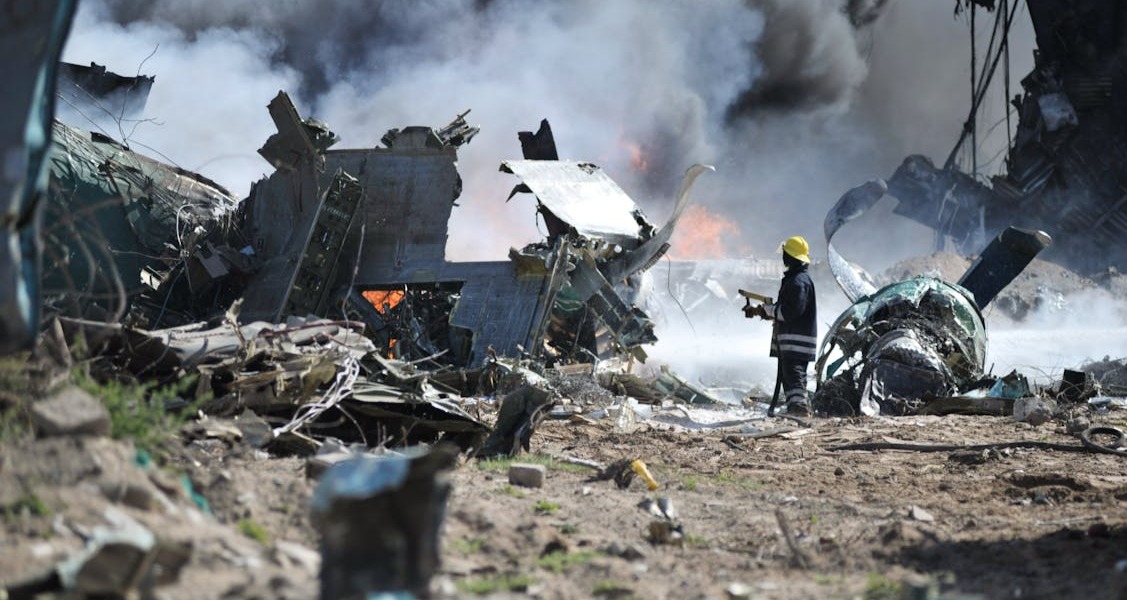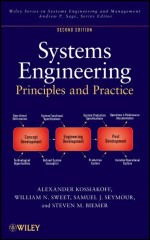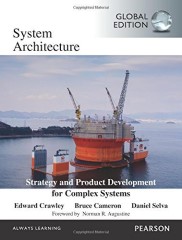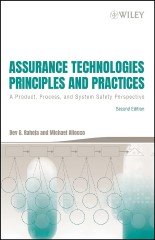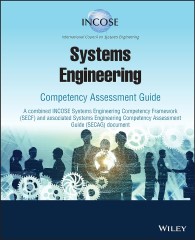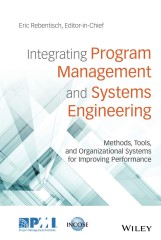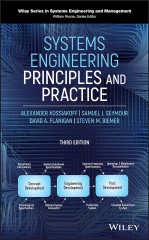The intricate tapestry of modern engineering is woven with threads of functionality, performance, usability, and crucially, safety. While the success of a project often hinges on meeting functional specifications and achieving performance targets, in many domains, the ultimate measure of success lies in the system’s ability to operate without causing harm. History is replete with stark reminders – from aviation disasters stemming from seemingly minor software glitches to medical device malfunctions with life-altering consequences and industrial accidents born from overlooked design flaws. In each of these scenarios, the precise definition and rigorous implementation of requirements, particularly those classified as safety requirements, play a pivotal role in either preventing catastrophe or contributing to it.
At its core, a requirement in engineering meticulously defines a necessary attribute, capability, characteristic, or quality of a system to satisfy a stated need or objective. However, a safety requirement transcends these general parameters. It carries a weight of responsibility far exceeding that of its functional or performance-oriented counterparts. This article aims to dissect the fundamental characteristics that distinguish a safety requirement, emphasizing its direct and indispensable link to hazard control and elucidating the critical purpose behind its derivation. Understanding these distinctions is not merely an academic exercise; it is a foundational competency for anyone involved in the development and deployment of systems where human life, environmental integrity, or significant assets are at stake.
Recommended Further Reading Amazon BooksTable of Contents
- Defining Safety, Risk, and Hazard in Engineering: The Foundational Triangle
- The Defining Pillars: Key Characteristics of a Safety Requirement
- Distinguishing the Purpose: Why Derive a Safety Requirement? Managing the Safety Control
- Can a Hazard Have Multiple Safety Requirements? The Layered Approach to Safety
- Crafting Effective Safeguards: What Makes a Good Safety Requirement?
- Conclusion: The Ethical and Practical Imperative of Safety Requirements
Defining Safety, Risk, and Hazard in Engineering: The Foundational Triangle
To truly grasp the essence of a safety requirement, we must first establish a clear understanding of the interconnected concepts of safety, risk, and hazard within the engineering context. Safety, in its most fundamental sense, can be defined as the state of being free from unacceptable risk of harm. This “harm” can manifest in various forms, including physical injury, loss of life, damage to the environment, or significant economic loss.
Risk, on the other hand, is a measure of the potential for this harm to occur. It is typically quantified as the product of two key factors: the probability (or likelihood) of a specific hazardous event occurring and the severity of the consequences if that event were to materialize. A high-risk scenario might involve a relatively probable event with severe consequences, or a highly improbable event with catastrophic consequences.
The linchpin connecting risk and safety is the hazard. A hazard is any potential source of harm. It could be a physical condition (e.g., high voltage, sharp edges), a chemical substance (e.g., flammable gas, toxic material), a biological agent (e.g., pathogen), a human factor (e.g., operator error), or even a system behavior (e.g., uncontrolled acceleration).
The process of hazard identification and risk assessment forms the crucial groundwork upon which effective safety requirements are built. Before a single safety requirement can be formulated, engineers and safety experts must meticulously identify potential hazards associated with the system throughout its entire lifecycle – from design and manufacturing to operation, maintenance, and disposal. Once identified, the risks associated with these hazards are assessed to determine their acceptability. Safety requirements are then specifically derived and implemented with the express purpose of mitigating or eliminating these identified hazards and reducing the associated risks to a level deemed acceptable by relevant standards, regulations, and ethical considerations.
Recommended Further Reading Amazon BooksThe Defining Pillars: Key Characteristics of a Safety Requirement
Several distinct characteristics delineate a safety requirement from other types of system specifications:
- The Direct and Undeniable Link to a Hazard: The most fundamental characteristic of a safety requirement is its explicit and direct relationship to a specific identified hazard. It is not a general statement of desired functionality or performance; instead, it is a targeted measure designed to directly address a potential source of harm. For instance, in an automotive braking system, the requirement “The anti-lock braking system (ABS) shall prevent wheel lock-up under emergency braking conditions on dry pavement” directly addresses the hazard of loss of vehicle control due to skidding during sudden deceleration. The traceability from the hazard (loss of control) to the specific safety requirement (ABS functionality under specific conditions) must be clear and demonstrable.
- The Paramount Focus on Preventing Harm: The primary and overriding objective of a safety requirement is the prevention of harm. Whether it’s preventing injury to operators, safeguarding the environment from pollution, or avoiding catastrophic equipment failure leading to economic loss, the core intent is always to minimize or eliminate negative consequences. This contrasts sharply with functional requirements, which define what the system does (e.g., “The aircraft shall be capable of reaching a cruising altitude of 35,000 feet”), or performance requirements, which dictate how well it performs those functions (e.g., “The robotic arm shall have a positioning accuracy of +/- 1 millimeter”). While functional and performance aspects can indirectly influence safety, a true safety requirement has harm prevention as its central tenet.
- The Specification of a Safety Function or Constraint for Hazard Control: Safety requirements often manifest as specifications for dedicated safety functions or the imposition of critical safety constraints on the system’s design or operation. A safety function is a specific action or capability implemented within the system solely to maintain or achieve a safe state in the presence of a hazard (e.g., an emergency shutdown system in a chemical plant, a fail-safe mechanism in a nuclear reactor). Safety constraints, on the other hand, are limitations or restrictions placed on the system’s design, materials, or operational parameters to prevent hazards from materializing (e.g., a maximum operating temperature for a critical component to prevent overheating and failure, the use of non-flammable materials in an aircraft cabin). The purpose of these functions and constraints is the active management and control of identified hazards.
- The Foundation in Rigorous Safety Analysis: Safety requirements are not typically derived arbitrarily or based on intuition alone. They are, in most safety-critical domains, the direct output of systematic and rigorous safety analysis techniques. Methodologies such as Failure Modes and Effects Analysis (FMEA), Fault Tree Analysis (FTA), Hazard and Operability Studies (HAZOP), and others provide a structured approach to identifying potential hazards, assessing their associated risks, and then systematically deriving safety requirements to mitigate those risks. The traceability from the conclusions of these analyses to the specific wording and implementation of safety requirements is a hallmark of a robust safety engineering process. The very purpose of deriving a safety requirement in this context is to implement a specific safety control identified through the analysis as necessary to reduce risk to an acceptable level.
- The Consideration of Failure Modes and Their Effects: A crucial aspect of defining safety requirements often involves anticipating potential failure modes of the system and specifying how the system should behave in the event of such failures to maintain a safe state. For example, a safety requirement for a railway signaling system might state, “Upon detection of a track circuit failure indicating a potential broken rail, the system shall automatically set all relevant signals to ‘Stop’ and prevent train movement into the affected section.” This requirement directly addresses a potential failure mode (track circuit failure) and dictates a specific system response (setting signals to ‘Stop’) to mitigate the resulting hazard (train derailment).
- The Imperative of Clarity and Verifiability: Like all good requirements, safety requirements must be articulated in clear, concise, and unambiguous language, leaving no room for misinterpretation. However, the need for clarity is even more critical for safety requirements due to the potentially severe consequences of misunderstanding. Furthermore, every safety requirement must be verifiable – it must be possible to objectively determine whether the requirement has been met through testing, analysis, inspection, or demonstration. An unverifiable safety requirement cannot be effectively implemented or assured.
Distinguishing the Purpose: Why Derive a Safety Requirement? Managing the Safety Control
The fundamental purpose behind specifically deriving a safety requirement is to mandate and manage a specific safety control within the system. It is common that safety requirements would be derived from hazards identified and documented in the projects hazard log. A safety control is any means by which a hazard is eliminated or the associated risk is reduced. Safety requirements serve as the formal mechanism for:
- Specifying the Implementation of Safety Controls: They dictate the inclusion of specific safety features, functions, or constraints in the system design.
- Defining the Performance of Safety Controls: They may specify the required performance characteristics of safety functions (e.g., response time of an emergency brake).
- Ensuring the Correct Operation of Safety Controls: They may include requirements for self-monitoring, fault detection, and fail-safe behavior to guarantee the reliability of safety controls.
- Verifying the Effectiveness of Safety Controls: They provide a basis for developing verification and validation activities to confirm that the implemented safety controls function as intended and achieve the desired level of risk reduction.
In essence, safety requirements translate the outcomes of safety analysis – the identified hazards and the necessary risk mitigation measures – into concrete, actionable engineering specifications. They ensure that safety is not an afterthought but is designed into the system from the outset and rigorously verified throughout its lifecycle.

Can a Hazard Have Multiple Safety Requirements? The Layered Approach to Safety
Absolutely. A single, significant hazard can, and often does, necessitate multiple safety requirements to effectively manage the associated risk. This layered approach to safety is a cornerstone of robust safety engineering. Different safety requirements might address the same hazard through various means:
- Prevention: One set of safety requirements might focus on preventing the hazard from occurring in the first place (e.g., design features to prevent overheating).
- Detection: Another set might focus on the early detection of the hazard if it does occur (e.g., temperature sensors and alarms).
- Mitigation: A third set might specify measures to mitigate the consequences if the hazard materializes (e.g., automatic shutdown systems, containment structures).
- Protection: Finally, requirements might focus on protecting individuals or the environment from the effects of the hazard (e.g., personal protective equipment requirements, emergency evacuation procedures).
This multi-layered approach, often referred to as “defense in depth,” recognizes that no single safety measure is foolproof. By implementing multiple independent layers of protection, the overall probability of a hazardous event leading to significant harm is significantly reduced.
Crafting Effective Safeguards: What Makes a Good Safety Requirement?
For a safety requirement to be truly effective in controlling hazards and mitigating risks, it must possess certain key qualities. The following table outlines these crucial attributes:
| Attribute | Description | Example |
|---|---|---|
| Clear and Unambiguous | Uses precise language, avoiding jargon, vague terms, and subjective interpretations. Leaves no doubt about what is required. | “The emergency stop button shall, when activated, cause the machine to come to a complete stop within 2 seconds.” (Clear) vs. “The machine should have a good emergency stop.” (Ambiguous) |
| Directly Hazard-Related | Explicitly links to a specific identified hazard and clearly states how it mitigates or prevents that hazard. The “why” behind the requirement is evident. | Hazard: Loss of containment of toxic gas. Safety Requirement: “The storage tank shall be equipped with a pressure relief valve that activates at a pressure of 1.5 times the maximum operating pressure to prevent rupture.” |
| Verifiable | Can be objectively verified through testing, analysis, inspection, or demonstration. Includes measurable criteria where applicable. | “The safety interlock shall prevent access to hazardous moving parts when the machine is operating at speeds exceeding 10 RPM.” (Verifiable) vs. “Access to moving parts should be difficult.” (Not verifiable) |
| Singular | Addresses only one specific safety concern. Avoids combining multiple requirements into a single statement. | “The system shall provide both an audible and a visual alarm upon detection of a critical fault.” (Singular, addressing one safety concern – fault indication) vs. “The system shall alarm and shut down safely upon fault.” (Combines alarm and shutdown – should be separate). |
| Feasible | Technically achievable within the constraints of the project (e.g., technology, cost, schedule). | A requirement for instantaneous teleportation as a safety mechanism is not feasible with current technology. |
| Necessary | Directly contributes to the mitigation or prevention of a significant hazard. Avoids including “wish list” items as safety requirements. | A requirement for a specific aesthetic design feature is not a safety requirement unless it directly prevents a hazard (which is unlikely). |
| Traceable | Can be traced back to the specific hazard identified in the safety analysis and forward to the design elements, verification activities, and validation results that address it. | A traceability matrix showing the link from a HAZOP finding to a specific safety requirement, its implementation in the design, and the corresponding test case. |
Conclusion: The Ethical and Practical Imperative of Safety Requirements
In the realm of engineering, the correct identification and meticulous management of safety requirements are not merely a matter of compliance or best practice; they represent a fundamental ethical and practical imperative. The consequences of overlooking or inadequately defining safety requirements can be devastating, leading to preventable accidents, environmental damage, and significant economic losses. By understanding the distinct characteristics of a safety requirement – its direct link to hazard control, its focus on preventing harm, its derivation from rigorous analysis, and the necessity for clarity and verifiability – engineers and developers can build safer, more reliable, and ultimately more successful systems. The purpose of a safety requirement is clear: to mandate and manage the critical safety controls that protect lives, the environment, and valuable assets. Embracing a culture where safety is paramount and where safety requirements are treated with the utmost rigor is not just good engineering; it is responsible engineering.
References
- Ariane 5 Flight 501 Failure Report
This report details the investigation into the 1996 failure of the Ariane 5’s maiden flight, highlighting the software error caused by the reuse of code without proper consideration for the new rocket’s specific requirements. While not a direct “source” in the traditional academic sense with a URL to follow here, it’s a well-documented real-world case study widely discussed in engineering and safety literature. You can find summaries and analyses of this report on numerous engineering websites and in academic papers by searching for “Ariane 5 Flight 501 failure report”. - Common Body of Knowledge (CBK) for various safety-related certifications (e.g., Certified Safety Professional – CSP, TÜV Functional Safety Engineer)
These certifications often have publicly available outlines or bodies of knowledge that discuss the principles of safety engineering, hazard identification, risk assessment, and the development of safety requirements. While specific URLs to the entire CBK might be behind membership walls, information about the topics covered is generally accessible on the certifying organizations’ websites (e.g., Board of Certified Safety Professionals – BCSP, TÜV Rheinland). Searching for the specific certification name along with “body of knowledge” or “outline” can provide valuable insights into the established principles in the field. - Relevant Industry Standards and Regulations (e.g., ISO 26262 for automotive functional safety, IEC 61508 for functional safety of electrical/electronic/programmable electronic safety-related systems, aviation safety standards from FAA/EASA)
These standards and regulations provide frameworks and guidelines for developing safety-critical systems. They often contain sections detailing the requirements for hazard analysis, risk assessment, and the specification of safety requirements. While linking directly to the full text of these standards might require a subscription, information about their scope and key principles is generally available on the websites of the issuing organizations (e.g., International Organization for Standardization – ISO, International Electrotechnical Commission – IEC, Federal Aviation Administration – FAA, European Union Aviation Safety Agency – EASA). Searching for the specific standard or regulation name will lead you to their official pages. - Textbooks and Academic Literature on Systems Engineering and Safety Engineering
Numerous textbooks and academic papers cover the principles of requirements engineering, systems safety, hazard analysis, and risk management. These resources often dedicate chapters or sections to the definition and characteristics of safety requirements. You can find these resources through university libraries or academic search engines by searching for terms like “safety requirements engineering,” “hazard analysis and safety requirements,” or “systems engineering safety”.

